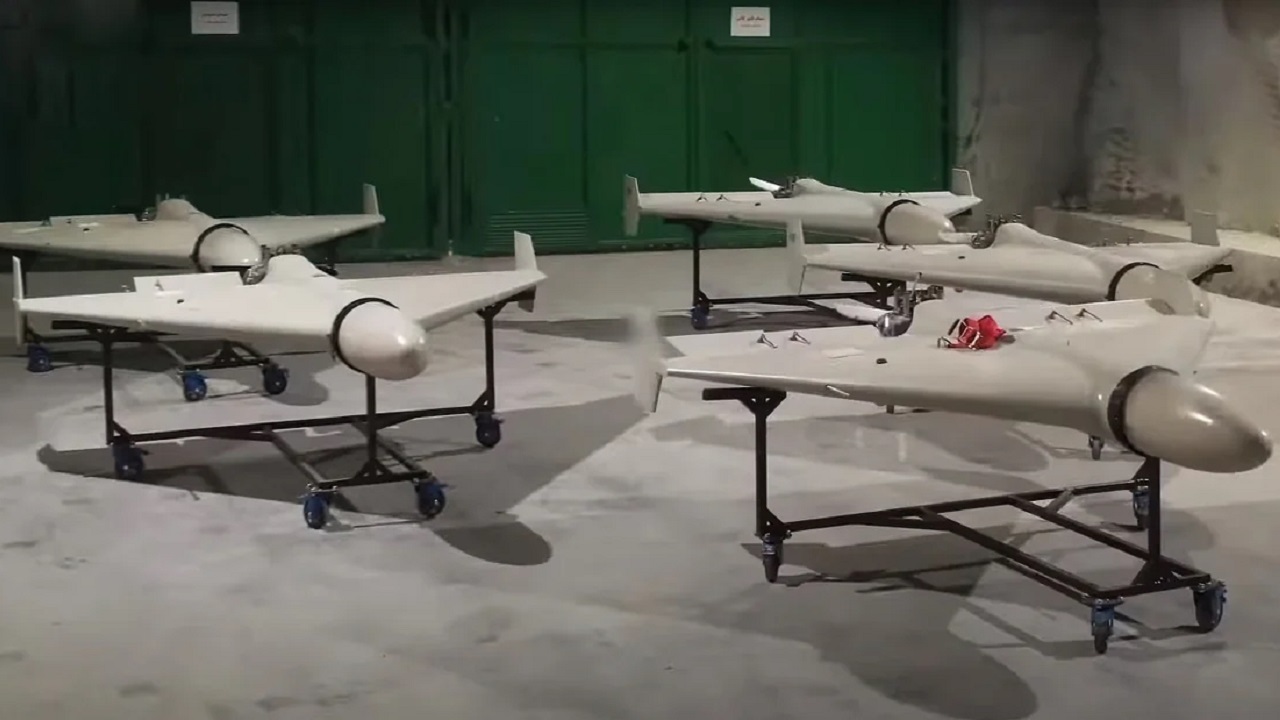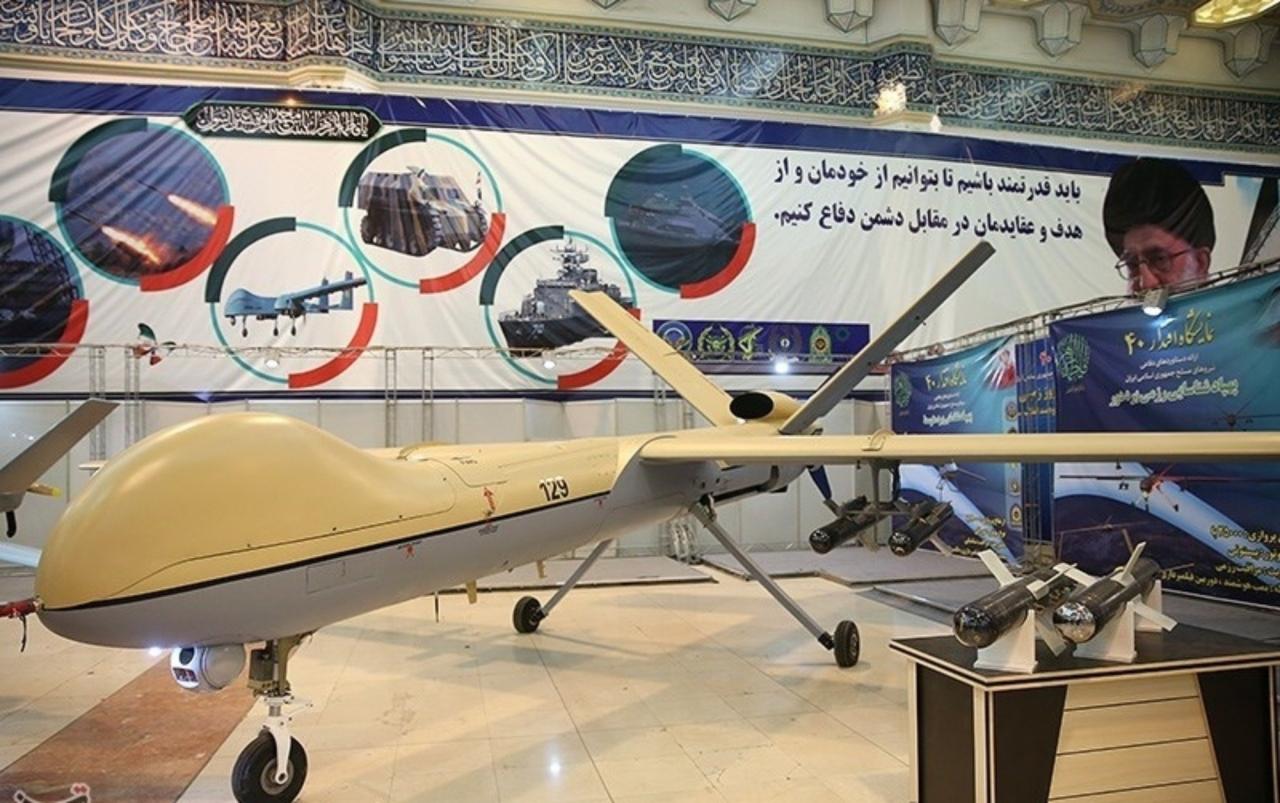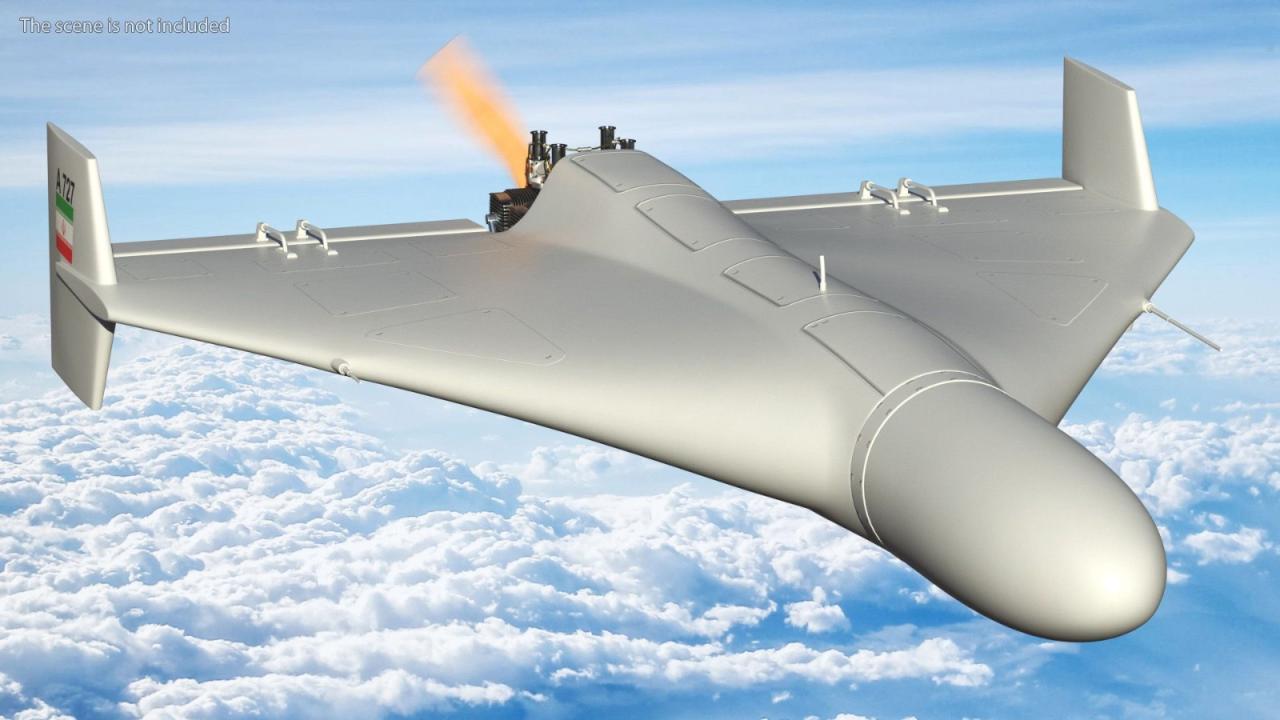Shahed drones, inexpensive and readily available unmanned aerial vehicles (UAVs), have rapidly become a significant factor in modern warfare and geopolitical strategy. Their proliferation has sparked considerable debate regarding their military effectiveness, ethical implications, and the countermeasures necessary to mitigate their impact. This analysis delves into the design, operational capabilities, military applications, countermeasures, economic consequences, and potential future advancements of these increasingly prevalent drones.
From their relatively simple design to their surprisingly sophisticated applications, Shahed drones represent a paradigm shift in asymmetric warfare. Understanding their capabilities and limitations is crucial for comprehending the evolving landscape of modern conflict and developing effective strategies for defense and deterrence.
Shahed Drone: A Comprehensive Overview

The Shahed drone, also known as the Shahed-136, has emerged as a significant player in modern warfare, raising concerns and sparking debate regarding its implications for military strategy, international relations, and ethical considerations. This overview delves into the design, operational capabilities, military applications, countermeasures, economic and political impacts, and potential technological advancements of this unmanned aerial vehicle (UAV).
Shahed Drone Design and Specifications

The Shahed drone’s design is characterized by its relatively simple construction and low cost, contributing to its mass production and widespread deployment. Key features are detailed below:
| Feature | Description | Specifications | Source |
|---|---|---|---|
| Physical Characteristics | The Shahed drone is a relatively small, single-use UAV with a delta wing design. It’s constructed from lightweight composite materials. | Approximate dimensions: Length – 3.5m, Wingspan – 2.5m, Weight – ~200kg (approximate, varies slightly based on payload). | Open-source intelligence reports and various military analyses. |
| Propulsion System | The drone utilizes a small, internal combustion engine for propulsion. | Engine Type: likely a modified motorcycle engine; Fuel: Gasoline or similar. | Reverse engineering analysis and technical assessments. |
| Payload Capacity | The primary payload is a high-explosive warhead. | Payload Capacity: ~50kg (approximate, based on observed warhead sizes). | Analysis of impact craters and weapon remnants. |
Shahed Drone Operational Capabilities

The operational capabilities of the Shahed drone contribute to its effectiveness as a weapon system. Its relatively simple design translates to ease of use and deployment.
The Shahed drone boasts a significant flight range and endurance, enabling it to reach targets at considerable distances. Navigation relies on a combination of pre-programmed GPS coordinates and inertial navigation systems. Communication for control and data transmission is likely achieved through a dedicated communication link, though precise details remain classified. Launch involves a simple procedure using a ground-based launcher, while recovery is not applicable due to the drone’s single-use nature.
Shahed Drone Military Applications
The Shahed drone has been employed in several conflicts, demonstrating its capabilities as a cost-effective weapon system. Its use raises critical ethical considerations.
The Shahed drone’s relatively low cost and ease of production have made it a significant factor in recent conflicts. Monitoring potential deployment areas is crucial, and a resource like the port dover live camera could offer valuable real-time situational awareness, helping to track unusual activity that might indicate the presence or movement of Shahed drones. Analyzing this footage could provide critical intelligence regarding potential threats.
- Deployment in Ukraine: Extensive use against Ukrainian infrastructure and military targets.
- Other reported deployments: Various reports suggest its use in other conflicts, although details are often scarce and unverified.
Compared to other UAVs, the Shahed drone offers a lower cost and simpler design, but sacrifices sophistication and precision in targeting. Strategic advantages include its low cost and long range, allowing for overwhelming numbers and potentially saturating air defenses. Disadvantages include its limited payload capacity, susceptibility to countermeasures, and lack of sophisticated targeting systems.
- Ethical Concerns:
- Lack of precision targeting, leading to civilian casualties.
- Proliferation risks, potentially destabilizing regional conflicts.
- Questions of accountability and responsibility for attacks.
Countermeasures Against Shahed Drones
Effective countermeasures are crucial in mitigating the threat posed by Shahed drones. A multi-layered approach is necessary.
Strategies for countering Shahed drone attacks involve a combination of detection, disruption, and neutralization techniques. These include electronic warfare, radar systems, anti-drone weapons, and even improvised methods. The effectiveness of these countermeasures depends on factors such as the specific technology used, environmental conditions, and the sophistication of the opposing forces.
Hypothetical Scenario: A swarm of Shahed drones is detected approaching a critical infrastructure site.
Early warning systems detect the incoming drones.
Electronic warfare systems are activated to jam communication signals.
Anti-drone systems engage, neutralizing several drones.
Remaining drones are intercepted by air defense systems.
Economic and Political Impacts of Shahed Drones
The production and deployment of Shahed drones have significant economic and political ramifications.
Economically, the low cost of production allows for mass deployment, creating a significant advantage for nations employing them. Geopolitically, the proliferation of this technology could destabilize regional balances of power. Key players include the manufacturer and the nations deploying these drones.
Timeline (Illustrative):
- 2010s: Initial development and testing.
- 2020s: Widespread deployment in various conflicts.
- Present: Ongoing development and refinement of the technology.
Technological Advancements in Shahed Drones
Future advancements in Shahed drone technology are likely to enhance its capabilities and impact.
| Advancement | Description | Potential Impact | Timeline |
|---|---|---|---|
| Increased Payload Capacity | Larger warheads or more sophisticated payloads. | Increased destructive potential. | Near-term (within 5 years). |
| Extended Range | Improved fuel efficiency or larger fuel tanks. | Greater operational reach. | Mid-term (within 10 years). |
| AI Integration | Autonomous targeting and navigation. | Enhanced effectiveness and reduced reliance on human operators. | Long-term (beyond 10 years). |
The Shahed drone’s impact extends far beyond the battlefield. Its relatively low cost and ease of deployment have democratized aerial warfare to a degree previously unimaginable, raising profound ethical questions and challenging traditional military doctrines. Continued research into both the drone’s capabilities and effective countermeasures remains critical, as its role in future conflicts continues to evolve. The long-term consequences of its proliferation are still unfolding, demanding careful consideration from policymakers and military strategists alike.
FAQ Summary
What is the range of a Shahed drone?
The range varies depending on the specific model and operational conditions, but generally falls within a range of several hundred kilometers.
The Shahed drone, a relatively inexpensive but effective weapon, has garnered significant international attention. Its proliferation highlights the importance of responsible drone operation, and obtaining the necessary permits is crucial. For those operating drones in Canada, understanding the requirements for a transport canada drone license is paramount to avoid legal issues. The increasing use of drones like the Shahed necessitates stricter regulations and responsible operation worldwide.
How are Shahed drones guided?
Guidance systems vary but often utilize GPS, inertial navigation systems, and potentially other forms of guidance depending on the specific model.
What type of explosives do Shahed drones typically carry?
They usually carry a high-explosive warhead, though the precise type and amount vary.
Are Shahed drones easily detected?
Detection depends on the technology used. Radar systems, electronic warfare measures, and visual observation can all play a role, but effectiveness varies based on factors such as weather and terrain.
